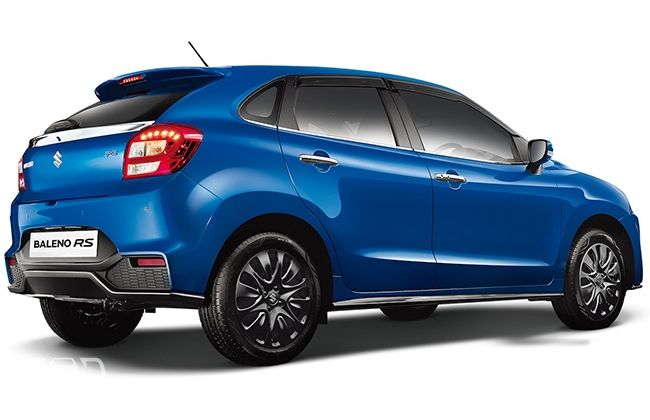Comparison – Baleno RS vs. International Baleno 1.0 Boosterjet
Published On Mar 02, 2017 09:40 PM By Jagdev
- Write a comment
Yes, we'll get the detuned version of the 1.0-litre, 3-cylinder engine, but that's not all

The Baleno is one car that is made in India and even exported to Japan. And even the performance-spec Baleno with 1.0-litre Boosterjet engine is already exported to Europe and Japan from India. Maruti Suzuki is set to launch the Baleno with the Boosterjet engine on March 3, 2017; however, the Baleno RS that we'll get in India will be a detuned version of its international counterpart. The Baleno RS for India will make 102PS of maximum power at 5,500rpm while on the international version, the same 1.0-litre Boosterjet engine makes 111PS at 5,500rpm. You may have already read this somewhere, but here are a few more things that you may not know!
1. Height
In India, the Baleno RS will be as tall as the standard Baleno at 1,510mm. However, the Baleno that is exported from India with the Boosterjet engine stands 1,470mm tall, 40mm lower than its Indian counterpart. While we'd rate taller cars to be easier to enter into/exit from, shorter height improves aerodynamics.
Interested in buying the Baleno RS? - Bookings are now open!
2. Tyre size
The tyre and wheel size of the Baleno RS that will launch in India will be identical to the standard Baleno's (with alloy wheels) size, which is 195/55 R16. However, the Baleno that is exported from India with the Boosterjet engine rides on 185/55 R16 wheels. So, while the diameter remains the same, the profile of the international spec is low and so is the width. Bigger tyre profile means more rubber, which ultimately improves ride quality.
3. Ground clearance
The international-spec Baleno with Boosterjet engine rides really low, and the claimed ground clearance is just 120mm! In comparison, the Baleno RS that we're set to get in India will stand 170mm over the ground, which is on par with the standard Baleno that we get. So, the international-spec Baleno with Boosterjet engine is not only shorter than the Baleno RS but also hugs the ground more.

4. Torque
Yes, the Baleno RS will see power and torque figures dropping compared to its international cousin. However, the maximum torque band of the Baleno RS will be wider compared to the international model. The 1.0-litre engine makes a max torque of 170Nm between 2,000-3,500rpm with the 5-speed manual transmission on the international car, but the same engine has been detuned to produce 150Nm of max torque between 1,700 and 4,500rpms. So, while you may not experience as mighty a pull on the Indian Baleno RS as on the international car, the duration of the surge in torque will be longer in comparison.
Wondering what will be the price of the Baleno RS? Check out our estimate!

5. Weight
The Indian Baleno RS will be lighter than the international version. However, it misses out on side and curtain airbags. The difference in weight is 30kgs, as the kerb weight of the Baleno RS will be 950kg while that of the international model is 980kg. Still, the international model has a better power to weight ratio (PS/kg) of 0.113 compared to the 0.107 of the Baleno RS.
Read more - 5 Interesting Things About The Baleno RS
Comparo - Maruti Suzuki Baleno RS vs. competition
Read More on : Maruti Baleno















